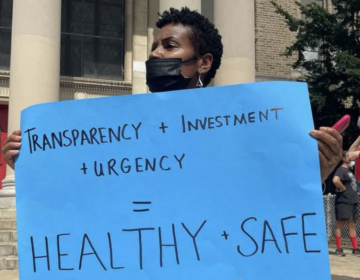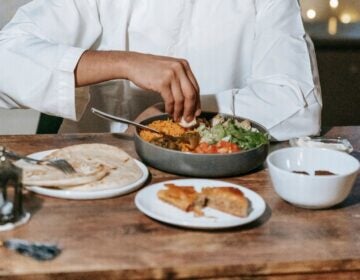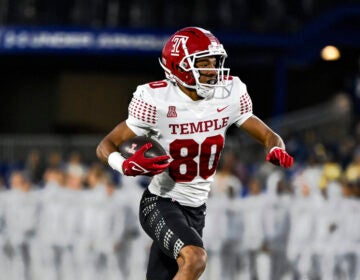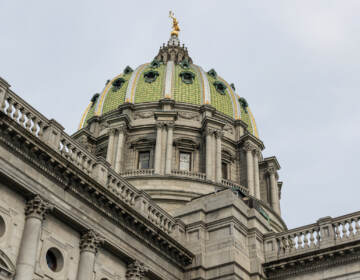Mayor Kenney announces Philadelphia’s 3 new community schools, funded by the soda tax
Three Philadelphia schools have been added to the city’s Community Schools Program, a hallmark of Mayor Jim Kenney’s education plan. There are now 20 in Philadelphia.
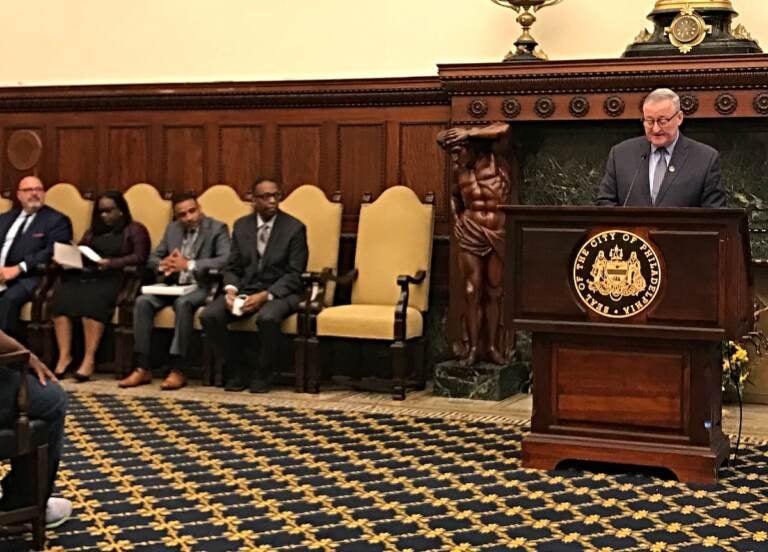
Mayor Kenney announced three schools to the city's Community Schools Program during a press conference at City Hall on Tuesday. (Alan Yu/WHYY)
Three Philadelphia schools have been added to the city’s Community Schools Program, a hallmark of Mayor Jim Kenney’s education plan. There are now 20 in Philadelphia, supported by the city’s soda tax.
The program, which launched in 2016, supplies the designated “community” schools with a full-time coordinator to help students, teachers, parents, and other members of a school community access resources like medical care, job training, and social services.
During a press conference at City Hall on Tuesday, City Council President Darrell Clarke recalled an early visit to Cincinnati, which is considered one of the leading examples of this model. Clarke said the model makes sense because it makes a school the center of a neighborhood.
“We don’t have [a sports stadium] in every neighborhood. We may not have various other things in every neighborhood, but you have a school in every neighborhood in the city of Philadelphia,” he said.
This year, eight Philadelphia public schools applied to the Community Schools program. The three new community schools are: Add B. Anderson Elementary School in West Philadelphia, Frankford High School, and Paul L. Dunbar School in North Philadelphia.
City officials said they prioritized schools in areas that have been affected by gun violence, among other issues. Michael Calderone, principal of Frankford High School, said that although Frankford is one of the “greatest” neighborhoods in the city, the community also deals with gun violence almost every day.
“I cannot wait to keep our building open later and throughout the summer to give our students, their families and the community additional access, access to the resources that they need not just to survive, but to thrive,” Calderone said.
How effective has the community school program been in Philadelphia? A 2018 report from a local education research nonprofit found mixed results. The researchers found that although the program was strong at individual schools, the collaboration between the city and schools could improve, and the program had to overcome a historic mistrust of schools from some families and community members.
After the release of the report, the city and school district told the Philadelphia Inquirer they were pleased with their work so far and have already implemented the recommendations.
The city pays for the program using the Philadelphia Beverage Tax. The budget for the program this year is around $9.8 million for 17 schools, and the proposed budget for next year for 2020 schools is $11 million. The program hit a legal obstacle because of a lawsuit over the soda tax, which the Pennsylvania Supreme Court ultimately ruled in favor of the city in 2018.
But because of the lawsuit, and the soda tax not bringing in quite as much revenue as anticipated in its first year, the city cut back its goal for the program. At first the idea was to have 25 community schools by 2020, which the city reduced to a goal of having 20 community schools by 2023. With this year’s three new schools, the city now meets its revised goal.
WHYY is your source for fact-based, in-depth journalism and information. As a nonprofit organization, we rely on financial support from readers like you. Please give today.




